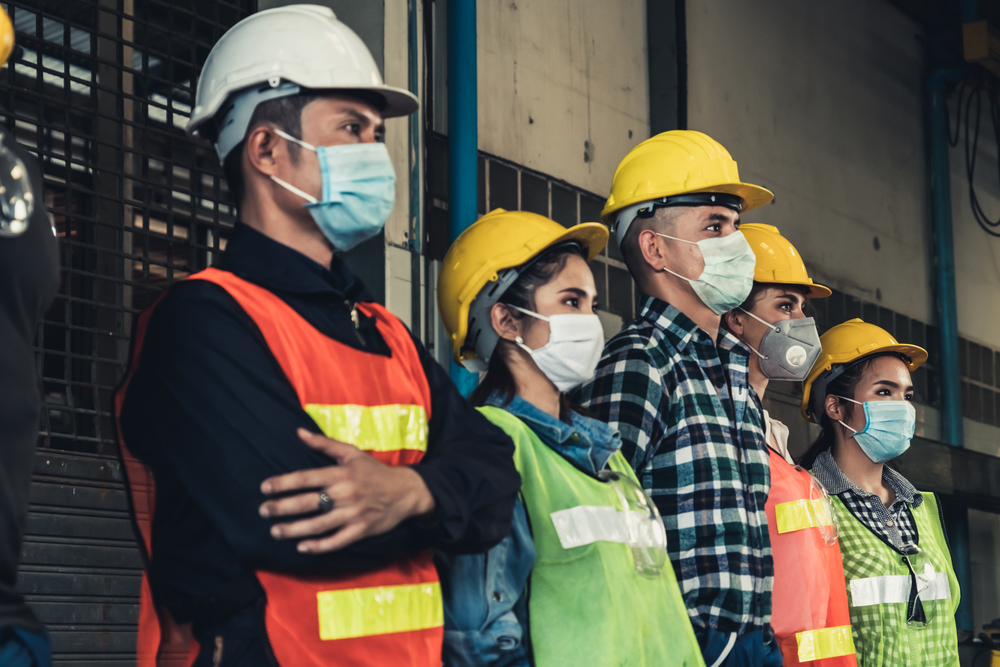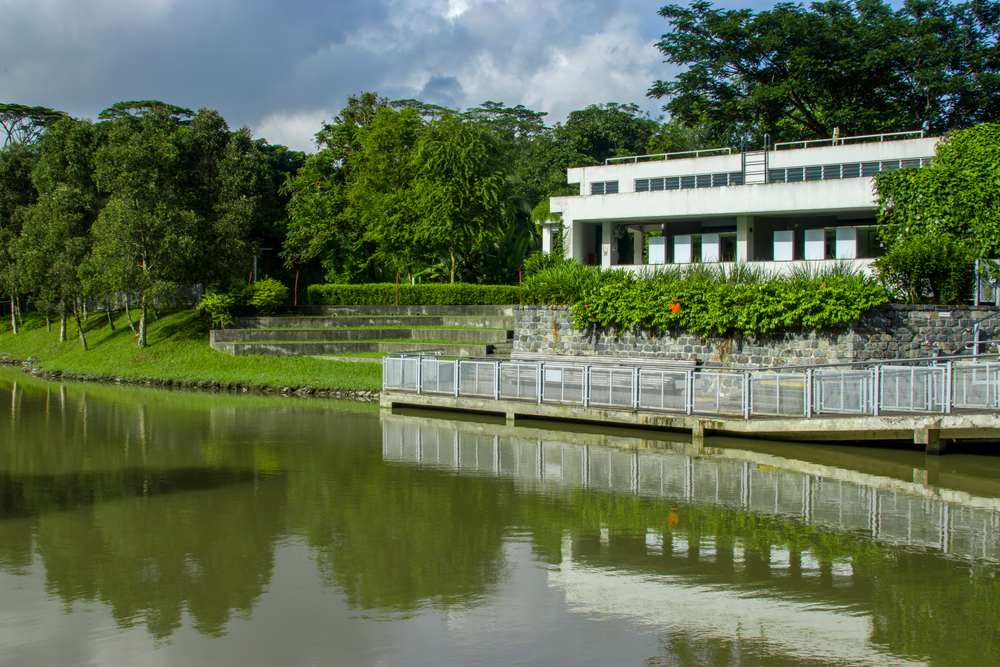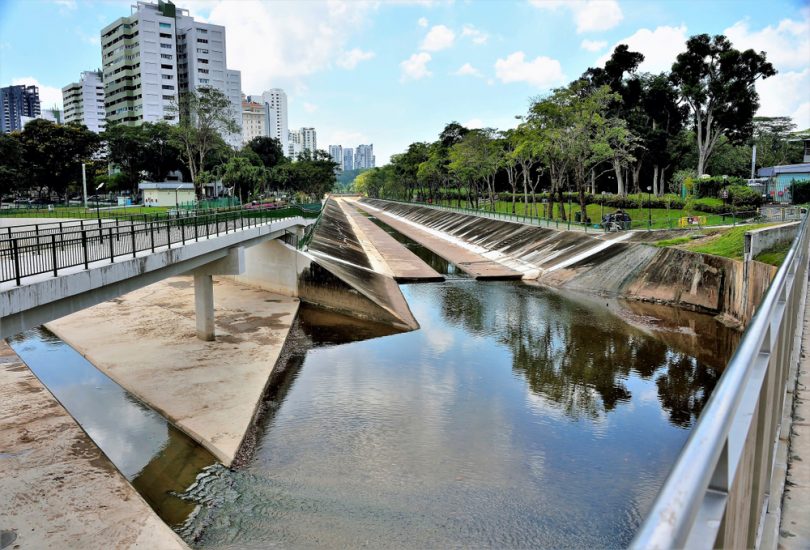by Anisa Pinatih
Construction, like many sectors, is facing unprecedented turmoil in the current pandemic situation. Now, with the ever-changing uncertainties and government regulations to momentarily halt projects, contractors are facing even bigger challenges. Although risk management is a complex task that involves legal or client-specific risk mitigation, this has become a crucial matter to look at, now more than ever, with the widespread implications of COVID-19, especially in terms of performance bond claims.
Supply chains are disrupted, leading to difficulties in material procurement or increased prices. Labour supply and movement are limited. The longer-term impact on the economy might even put owners’ financial assurance in jeopardy. However, resilience is needed to sustain businesses. Government policies are being put in place to assist the industry, in emerging and developed economies alike, because the construction development is a major contributor to each country’s GDP.
In Indonesia, for example, infrastructure construction remains a priority in 2020, with budget being increased to US $26 billion. Malaysia has also planned to boost its construction through its Budget 2020. Likewise, construction demand in Singapore is expected to remain strong and reach up to S $33 billion. With such a central role in the economy, construction industry players must be able to navigate their way through the difficult situations.
What we can learn so far is expect the unexpected. Contractors need to take into account unforeseeable events such as the COVID-19 pandemic in their contracts.
WHAT ARE THE KEY CONTRACT CLAUSES TO CONSIDER?[1]
Force majeure: This is usually covered in a contract as part of delay clauses. Unpredictable events such as earthquake, terrorism or virus outbreak may be expressed explicitly in a contract. Even if it is not, contractors are still entitled to relief because this is beyond their control. The clauses should allow for an extension of time. Compensation may be claimed, such as when the owner refuses to grant extension, forcing the contractor to accelerate their work.
Escalation clauses: This allows a contractor to receive an increase in its contract price if costs go up under circumstances described in the clause. If the contract is cost-reimbursable up to a guaranteed maximum price, the contractor should not agree to it at this time without including an exclusion that allows for a claim if costs increase beyond the base.
Change-in-law clauses: This can be useful to protect against unforeseen policies over the course of a project. Ideally, the contract definitions should provide a broad definition of law to include not just laws and regulations, but also actions taken by government officials, such as when they order a city to go under a lockdown.

Construction workers wearing face masks to avoid the COVID-19 transmission; image by Blue Planet Studio/Shutterstock
Mutual waiver of consequential damages: Contractors may waive its rights to recover consequential/indirect damages suffered by the owner, especially if the owner’s profit/loss is foreseeable, such as when the virus outbreak was declared a global pandemic by WHO.
Owner’s duty to provide adequate assurances of financing: Evidence of adequate financing to complete a project is commonly recorded in a contract. However, longer-term impacts of unexpected situations such as the virus outbreak may jeopardise the owner’s financing. A contractor may want to exercise its right to seek for documentation that ensure the continuation of its project.
Emergency and safety clauses: With social distancing practices in place, it is impossible to work in cramped spaces. Contractors may want to consider various ways of addressing this, for example, by building temporary shelters with good ventilation. This may qualify for a claim under the emergency clause.
WHAT SHOULD CONTRACTORS BE CAUTIOUS OF?
The propositions in key clauses above may be able to protect contractors from the unforeseeable circumstances. However, they should be cautious of the fact that courts tend to have a narrow view of what can be considered as force majeure. Causation must have three conditions: that the event was unforeseeable, unavoidable and impossible to overcome [2].
Timelines play an important role in this context. Existing bond contracts made before the COVID-19 outbreak can easily meet the three conditions. The question lies with contracts signed after 11 February 2020 when WHO declared COVID-19 a global pandemic. There was even an earlier notice on 30 January 2020 stating that the outbreak is a Public Health Emergency of International Concern. Any contracts made thereafter should not deem the pandemic as unforeseeable. This may increase the risk of performance bond claims if projects are delayed or not completed.

Risk management has become more crucial than ever with the extensive impacts of the pandemic; image by Abdul Razak Latif/Shutterstock
HOW CAN RISKS BE MINIMISED?
Also read a construction lawyer’s point if view, Chan Kheng Hoe: COVID-19 and Contractors’ Dilemma
Construction disputes are expensive and time consuming. The best practice is to draft a contract that covers a virus outbreak. Learning from the current situation, a little bit of work up front will minimise the pandemic impacts on projects and business in general. But what if the contract has been signed without a virus outbreak classified in the force majeure clauses?
The first step is to consult with a good construction attorney and draft a new contract that includes content specific to COVID-19 delays. Leaving the contract up to the court’s interpretation may put a contractor at a disadvantageous position. Here are some key steps to reduce likelihood of claims against bonds[3].
Planning for risk: Project managers should be encouraged to add COVID-19 into project risk registers and create risk mitigation strategies for shortages. Guidance from the health authorities should also be incorporated into site practices.
Being proactive and communicative: If there are concerns about risk to a project, a surety company should be involved. In areas impacted by COVID-19, contractors must contact relevant parties, including suppliers, to discuss contingency plans and strategies; communicate the contract clauses; list the liquidated damages or penalties for delays; and see if an agreement can be reached.
Reviewing backlog: Backlog adjustment should be made if resources, such as labour, are prioritised for a job that is impacted by COVID-19. If resources are becoming limited, some projects in the pipeline may be deferrable until the pandemic is under control.
Assessing the financing: Up front payments to suppliers may increase the risks, especially with the current development as governments are exercising stricter border controls and domestic mobility. If possible, capital expenditures should be delayed until there is more certainty. This can help conserve cash in the business.
[1] Construction Guidance for Coronavirus (COVID-19) Pandemic – ajg.com
[2] Performance Bonds and the Coronavirus | MG Surety Bonds.
[3] How to Avoid Coronavirus-Related Surety Claims in Construction – Hylant.
Disclaimer: Construction+ makes reasonable efforts to present accurate and reliable information on this website, but the information is not intended to provide specific advice about individual legal, business, or other matters, and it is not a substitute for readers’ independent research and evaluation of any issue. If specific legal or other expert advice is required or desired, the services of an appropriate, competent professional should be sought. Construction+ makes no representations of any kind and disclaims all expressed, implied, statutory or other warranties of any kind, including, without limitation, any warranties of accuracy and timeliness of the measures and regulations; and the completeness of the projects mentioned in the articles. All measures, regulations and projects are accurate as of the date of publication; for further information, please refer to the sources cited.
Hyperlinks are not endorsements: Construction+ is in the business of promoting the interests of its readers as a whole and does not promote or endorse references to specific products, services or third-party content providers; nor are such links or references any indication that Construction+ has received specific authorisation to provide these links or references. Rather, the links on this website to other sites are provided solely to acknowledge them as content sources and as a convenient resource to readers of Construction+.
A low impact development (LID) is an alternative land development approach for managing storm water, with the aim of reducing the impact of development on water resources. The management practices include infiltrating, evaporating, or harvesting and using storm water on the site where it falls.
Also read: Integrated Validation Plant at Ulu Pandan
In recent years, research has shown that the individual practice of LID—bioretention, pervious pavements, rain gardens and grassed swales, etc.—are highly effective in managing stormwater runoff, improving water quality, and protecting the environmental and hydrological aspects of developed areas.
LID PRINCIPLES & TECHNOLOGIES
LID uses nature as a model to manage rainfall at the source by implementing a sequence of runoff prevention/mitigation strategies and treatment controls. In brief, there are five principles of LID design:
- Conserving natural areas wherever possible
- Minimising the development impact on hydrology
- Maintaining runoff rate and duration from the site
- Using an array of integrated management practices to reduce and cleanse runoff
- Implementing pollution prevention, proper maintenance and public education programmes
LID technologies include:
- Engineered systems that filter and retain storm water from parking lots and impervious surfaces
- Modifications to infrastructure to decrease the number of impervious surfaces
- Low-tech vegetated areas that filter, direct and retain storm water
- Innovative materials that help disconnect impervious surfaces, made of material such as porous concrete and permeable pavers
- Water collection systems such as subsurface collection facilities, cisterns or rain barrels

Integrated Validation Plant at Ulu Pandan; image by Black & Veatch
EVIDENCE & PROFITABILITY
Researchers from the School of Environment and Energy, Peking University Shenzhen Graduate School investigated the effects of three LID techniques (swales, permeable pavement and green roof) on urban flooding in China, comparing them with the conventional drainage system design. The performance of LID designs was measured under different rainfall characteristics.
The results show that all three LID scenarios were more effective in flood reduction during heavier and shorter storm events, with performances varying according to the location of peak intensity. Swales perform best during a storm event with an early peak, permeable pavements with a middle peak, and green roofs with a late peak.
Anne Guillette, a LEED Accredited Professional, in 2016 Whole Building Design Guide reported that the Somerset community saved US$916,382 from the use of LID. This is one of the oldest communities in the US to implement LID on a large scale (60-acre development) starting in 1995, with 199 homes siting on 10,000 square foot lots. The alternative development pattern that used distributed stormwater management systems yielded six additional lots, which resulted in increased revenues at US$40,000 each.
These additional revenues and overall water management cost savings are more profitable than using conventional stormwater management technique, which directs all storm water to drains to remove it from the site as quickly as possible. With this technique, runoff needs to be managed on the site, so large ponds, or a series of ponds, are required, which will take up a big portion of land.
LID IN SINGAPORE
Post Carbon Institute reported that LID in Singapore contributes 35 per cent of the city’s water supply, with much of it integrated into innovative architecture as well as landscaping for pedestrian or recreational amenities. Two thirds of the city—rooftops, parks, medians, sidewalks, roadways—capture rainwater and convey or pump it via microprocessor-controlled channels or tunnels to 18 reservoirs.
Also read: Deep Tunnel Sewerage System (DTSS) Phase 2
The design and engineering potential of urban water reclamation through Green infrastructure will not only result in sustainable built environments, but also substantial economic returns, where Singapore can become a global hub of water technologies and innovations.
The Singapore International Water Week 2018 (SIWW) conference attracted more than 24,000 participants from 110 countries and regions, focusing on emerging themes such as smart technology, resource-efficient water treatment and the accelerated commercialisation of innovative water technologies.
It garnered close to S$23 billion in total for the announcements on projects awarded, tenders, investments and MOUs with the attending countries and regions. This was an increase of 37 per cent from the 2014 conference that saw S$14.5 billion in total.
In between these main conferences, there are SIWW Spotlight series—exclusive by-invitation events to continue the dialogue and foster ongoing exchanges on pressing challenges faced by the water sector worldwide. The 2019 delegates include non-domestic water users and their supply chain vendors; key decision makers and R&D leaders.
Also read: PUB awards SG$449 million Domestic Liquids Modules contract for Tuas Water Reclamation Plant

June 2020: The pond and green roof at Jurong Eco Garden; image by Danny Ye/Shutterstock
BARRIERS TO THE IMPLEMENTATION OF LID
Researchers at the Korea Institute of Civil Engineering and Building Technology claim that some barriers for retrofitting the LID practices in urban areas include:
- Difficulty in finding suitable places for LID practices in the existing complex infrastructure
- Lack of design standard practices as most of the research is done in subtropical climate regions, which may not be applicable in Asia
- Lack of knowledge about the LID technology among practitioners and stakeholders; as well as government agencies programmes and initiatives
- Perceived difficulty and high maintenance costs
- Lack of immediate benefits of investing in LID technology
- Lack of technical capabilities and scarce financing
Considering the vulnerability of Asian cities to risks associated with storms and natural disasters, we need to seek solutions to remove these barriers. Flooding and draught not only cause casualties and damage to the environment, but also impact the economy. Urban policies should include more sustainable options and risk mitigations for natural disasters.
Also read: Flooding: Why cities in Southeast Asia need to be more resilient
LID promises sustainable and efficient solutions. Educational workshops could raise the awareness of the importance and benefits of retrofitting LID practices in urban areas. Cooperation and collaboration among engineers—civil, transportation and water engineers, as well as LID professionals—together with public sector’s support and initiatives, are key in carrying out LID practices that will lead to a safe and sustainable future.
Disclaimer: Construction+ makes reasonable efforts to present accurate and reliable information on this website, but the information is not intended to provide specific advice about individual legal, business, or other matters, and it is not a substitute for readers’ independent research and evaluation of any issue. If specific legal or other expert advice is required or desired, the services of an appropriate, competent professional should be sought. Construction+ makes no representations of any kind and disclaims all expressed, implied, statutory or other warranties of any kind, including, without limitation, any warranties of accuracy and timeliness of the measures and regulations; and the completeness of the projects mentioned in the articles. All measures, regulations and projects are accurate as of the date of publication; for further information, please refer to the sources cited.
Hyperlinks are not endorsements: Construction+ is in the business of promoting the interests of its readers as a whole and does not promote or endorse references to specific products, services or third-party content providers; nor are such links or references any indication that Construction+ has received specific authorisation to provide these links or references. Rather, the links on this website to other sites are provided solely to acknowledge them as content sources and as a convenient resource to readers of Construction+.

 Hong Kong
Hong Kong Singapore
Singapore Indonesia
Indonesia Tiếng Việt
Tiếng Việt ประเทศไทย
ประเทศไทย









